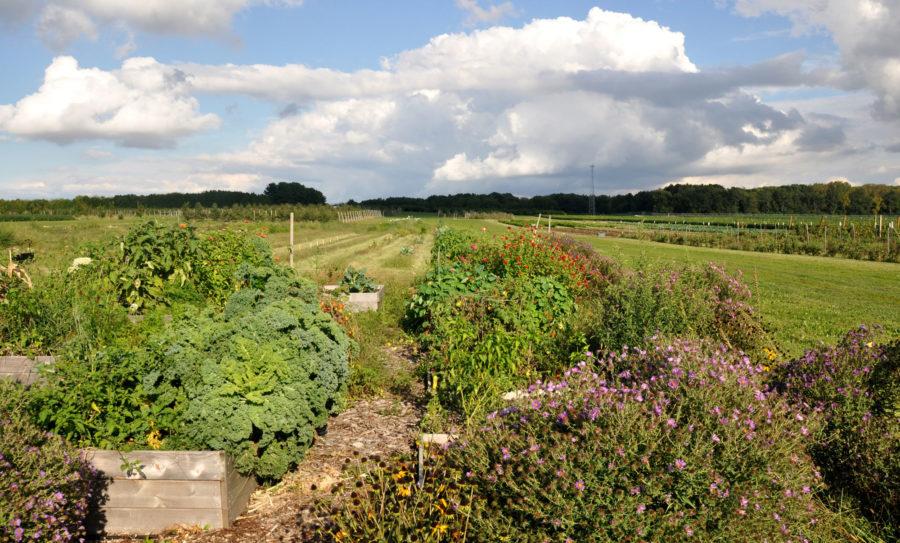University and Sustainable Student Farm work together
Tiffany Zhang | Staff Photograph
Student grown produce at the Sustainable Student Farm Open House on September 11, 2015.
October 19, 2015
University Dining Services spends $16 million — in dining halls and catering services — every year on food and drinks; 27 percent of the cost is attributed to local food sources, said Dawn Aubrey, associate director of University Housing for Dining Services.
Aubrey said the food sources must not just be local, but sustainable too. The sources also need to be in line with the Good Agricultural Practices audit, which ensures the best agricultural methods are used to grow fruits and vegetables. http://www.ams.usda.gov/services/auditing/gap-ghpMD
Aubrey said the University holds the produce and meat served to a high standard. Meat is sourced locally;for example, some pork is acquired from towns in central Illinois and some beef comes from Mendota, Illinois. Aubrey said all the meat served by University Dining Services must come from farms that treat animals humanely and responsibly.
She said Dining Services feels accountable for serving students responsibly, by providing good meals and following students’ desires.EJ
Get The Daily Illini in your inbox!
“Students have entrusted us with their dollars,” Aubrey said. “We need to use these dollars in a manner that they would if they were preparing their own meal.”
The Sustainable Student Farm helps the University in its mission to provide healthy options. The farm is a combined initiative between the department of crop sciences and University Dining; it is currently in its seventh growing season, according to Professor Bruce Branham, the farm’s faculty coordinator.EJ
“Sustainability is farming in a way that we could do this forever,” Branham said. “We treat the soul as a living resource.”
Branham said the most important advantage of locally grown food is taste, which encourages people to eat more vegetables and have a healthier diet.
“Taste is the important thing — eating is about taste,” he said. “If the plants taste good, if you actually like what you’re eating, you’ll want to eat it.”
Food security is another benefit of local farming. Branham said farming locally provides an important safety net against regional issues or crop epidemics, and while the farm only provides 3.5 to four percent of Dining Services’ needs, the security is valuable to the University and its students.
Branham said all of the goods produced by the farm go to the University. They are either sold to the student body on the Quad or sold directly to Dining Services, at a ratio of approximately one to five. The small scale and sustainable practices end up costing 25 to 50 percent more than buying from large wholesalers, but Branham said the benefits of the food make up for the increased price.
“It provides a space for students to learn about organic diversified vegetable production,” said Matt Turino, farm manager. “It provides a space for education and research.”
The farm also acts as a testing pool for research by students and faculty. It lets students gain academic knowledge and practical experience in raising crops, a skill Turino and Branham find valuable.
Turino said he wants to see the farm continue to operate because he thinks it is a valuable investment of University resources. But, he said, the farm is operated almost entirely by volunteer students and they are always in demand.
“On this kind of farm, there’s always something to do,” Turino said.







